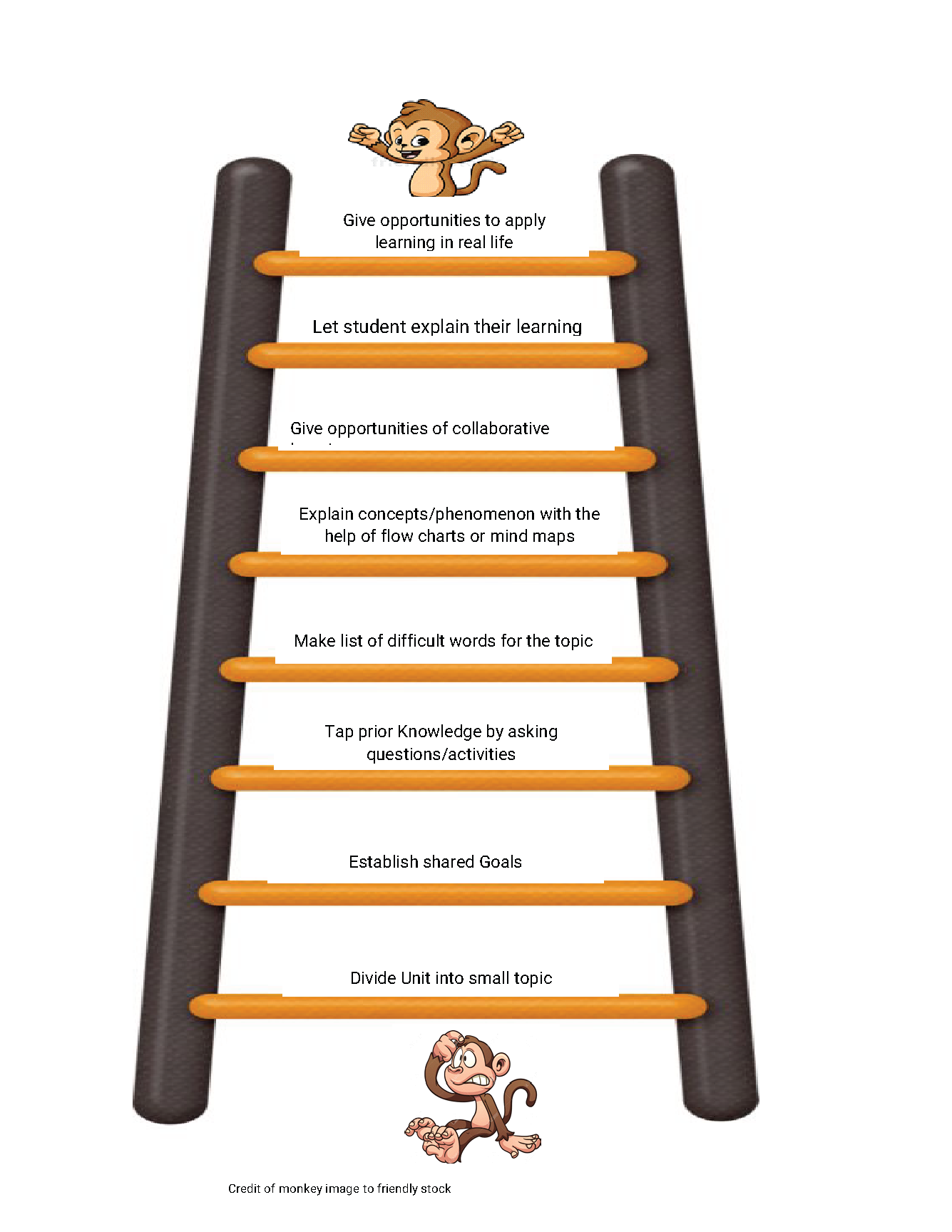Scaffolding: A technique of learning
Scaffolding is instructional technique, which will helps student climb the ladder of learning. These techniques act as an external support, which help student to stand as an independent learner. It help them achieve new skills in which educator models the skill, give clues and ask questions.
To scaffold a task the educator should be aware of what learner can do independently and what can be accomplished with help that is educator set achievable small goals.
Scaffolding is different from differentiation and it is an important tool required for every student. The application of this tool is not only restricted to teaching and learning in class, but also extents in setting formative assessment and in helping students meeting achieving big goals without stress.
Why do we need to do scaffolding?
- To maintain students focus in class.
- To be informed about students learning as an educator.
- Motivates and gives confidence to student.
- Helps in acquiring new knowledge.
- Helps in making connections.
Incorporating Scaffolding in classroom:
Teaching and learning environment in the classroom should be positive, encouraging and enabling students to achieve goals. In order to have this environment content and skills needs scaffolding for that in a unit can follow the below ladder can be a possible way:

Scaffolding for BIG Task like Personal project, Extended Essay, IA:
- Divide the task into small manageable portions.
- Teach skills required for accomplishing the task.
- Set a timeline.
- Discuss the progress on regular basis.
- Motivate student throughout.
- Provide prompt feedback.
Scaffolding for assessment (conduct formative assessment)
- Give direct questions on small portions.
- Make student familiar with the terminology, give questions like word hunt and match words with definitions.
- Give images of procedural diagrams and ask students, to annotate/ about their understanding/ how differently they can do it.
- Encourage them to draw diagrams/ flowcharts/ mind maps of their understanding.
- Ask them to present their understanding to the class as PowerPoint / charts.
